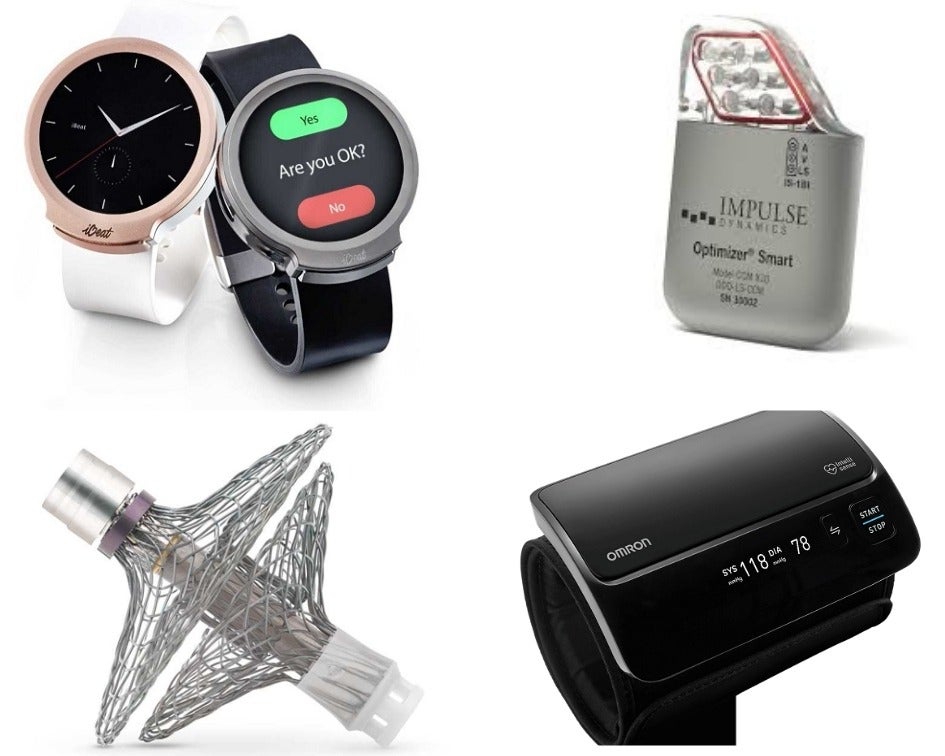
From smartwatches that alert nearby people with CPR training to implants enabling personalised heart failure treatment, technology is rising to the challenge of fighting against deadly cardiac conditions. And as February marks National Heart Month, it’s a good time to recognise some of the most effective innovations either available now or coming to the market soon.
Heart diseases are the leading cause of death for men and women. In the UK alone, more than 2.5 million people are living with conditions such as cardiovascular disease and hypertension, causing more than 82,000 deaths annually.
Cholesterol charity Heart UK revealed that every seven minutes, someone in the UK will have a heart attack.
But the good news is that monitoring the heart from life-threatening emergencies is becoming easier for all patients – including babies born with holes in their hearts – as medical technologies advance. Here’s some of the best.
iBeat Heart Watch
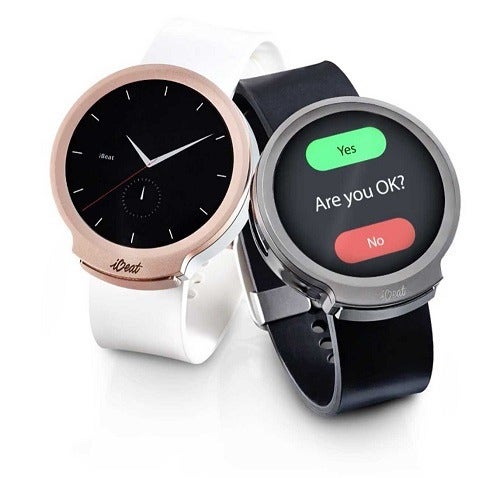
Smart wearable company iBeat, based in San Francisco, has designed a smart watch with medical grade sensors that continuously measures blood circulation and oxygen levels, while monitoring heart rate in real time.
If an abnormality in the cycle is detected and the wearer is unresponsive for ten seconds due to a possible cardiac arrest or heart failure, the iBeat Heart Watch notifies a designated emergency contact along with emergency services via 999.
In addition, the $250 (£190) watch has integrated a comprehensive “heart hero network” of more than 1.5 million people, such as off-duty police officers, paramedics and ordinary citizens, who are trained in CPR.
It means the network links its wearer with local people who can assist with lifesaving aid before an ambulance arrives.
The iBeat Heart Watch is independent of a smartphone, Wi-Fi or Bluetooth as it’s equipped with a built-in cellular functionality – speeding up connection and reducing the risk of losing signal.
Amplatzer Piccolo Occluder
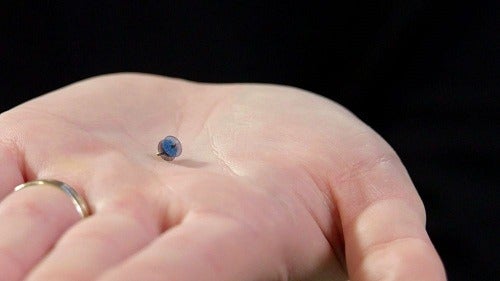
The Amplatzer Piccolo Occluder is billed as the “world’s first device for treatment of premature babies and newborns with patent ductus arteriosus (PDA)”.
PDA is a common congenital defect causing an opening in a baby’s heart and accounts for up to 10% of all congenital heart disease.
Previous treatments have included medical management – such as an IV drip or feeding supplements – and open-heart surgery.
But these aren’t always possible or effective, and can be dangerous for infants.
The pea-sized Amplatzer Piccolo Occluder was developed last month by American healthcare company Abbott Laboratories, and has been approved by the US Food and Drug Administration (FDA).
It is a self-expanding, wire mesh device that is inserted through a small incision in the leg and guided through vessels to the heart, where it is placed to seal the opening in the organ.
The technology is designed to allow the physician to insert it through the aortic or pulmonary artery, as well as to retrieve and redeploy it for optimal placement.
Treatment with the device provides an almost immediate impact with long-term benefits, reduces the risks of life-threatening complications and allows physicians to confidently treat the youngest and tiniest patients.
Optimizer Smart Implantable Pulse Generator
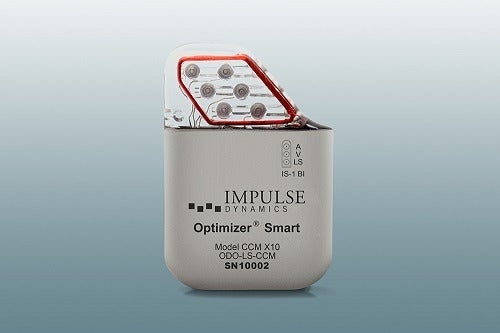
Developed by German company Impulse Dynamics, the Optimizer Smart Implantable Pulse Generato is designed to treat chronic heart failure (CHF) in patients that still suffer despite having received appropriate medical treatments.
The implantable medical device delivers electrical pulses to the heart that are intended to reduce symptoms, such as fatigue, persistent coughing and a rapid or irregular heartbeat.
It also improves exercise tolerance in patients during the absolute refractory period of the heart cycle – a painful experience that happens just after the heart contracts.
This is to improve systolic contraction of the heart – the blood pressure when the heart is contracting with the aim of boosting the heart’s performance and pumping ability of weakened heart chambers.
The device has been implanted in more than 3,500 patients and is currently available in Europe, China, Brazil, India and several other countries around the world.
Omron EVOLV
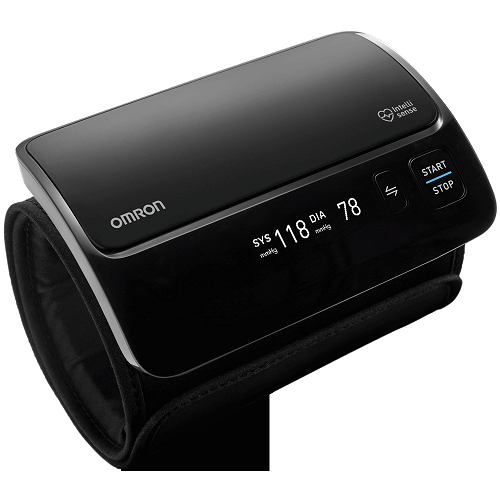
Japanese company OMRON Healthcare designed the NHS-recommended digital blood pressure monitor Omron EVOLV.
The device wraps around the upper arm and features built-in Bluetooth that can sync results to the OMRON connect smartphone app.
The £97.49 monitor wirelessly syncs readings with the connected smartphone.
The wearer can view, manage and store an unlimited number of readings to track their progress and share with a doctor.
OMRON Evolv is also the first device of its kind to offer connection to Alexa, the cloud-based voice assistant service built by Amazon, to encourage regular blood pressure monitoring and better heart health habits.
Vectorious’ V-LAP
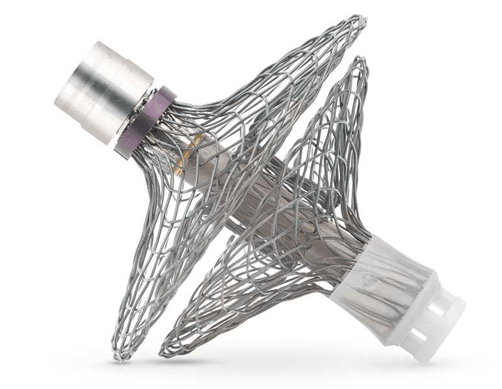
Israeli medtech start-up Vectorious Medical Technologies has created the V-LAP sensory implant, which CEO and co-founder Oren Goldshtein claims to be the world’s first in-heart microcomputer for left atrial pressure monitoring that enables personalised treatment for heart failure.
Due to the heart’s left atrium pressure being the earliest and most accurate real-time indicator of a heart failure, Vectorious hopes its V-LAP monitoring system will be a significant improvement in heart failure management.
According to the company’s recent announcement, the first implantations of the device have begun this month as part of a first-in-human study that will enrol up to 30 patients in Germany, Israel, Italy and the UK.
According to the US’ National Center for Biotechnology Information, heart failure is the leading cause of death for both men and women, and afflicts 26 million people worldwide.
But heart failure can be managed and life-threatening episodes can be prevented by appropriate medical treatment.
Mr Goldshtein says the implantable V-LAP enables heart failure to be managed effectively before the disease deteriorates.
He adds: “The implant is positioned within the patient’s left heart chamber, the atrium, to measure left atrial pressure (LAP) on a daily-basis, providing actionable data for optimal treatment.
“The catheter-based delivery system is used in a standard minimal invasive procedure to fixate the implant precisely on the inter-atrial septum.
“The wearable device is used once a day by the patient. The device automatically communicates with the sensory implant within the heart, receiving LAP data and sending it to the digital health patient management system.
“The digital health patient management platform is used by the healthcare service providers to monitor all patients, enabling a new era of personalised treatment for each and every patient, at an early enough stage to prevent deterioration of the heart.”






